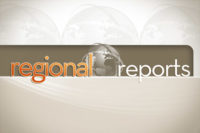Last fall, Harris Interactive conducted a phone survey of 1,007 adults for Emerson Climate Technologies. The results revealed that only 12 percent of adults surveyed were willing to invest more than $2,000 in an energy-efficient home upgrade that would pay for itself in two years. This attitude leads to challenges for HVAC contractors to upsell systems based on efficiency. The Emerson survey also showed that while consumers are aware of the energy demands of their HVAC systems, they are making smaller energy efficiency investments, unaware of valuable tax incentives.
Homeowner Insight
Complicated terms such as SEER and HSPF, which are used to explain energy savings to consumers who might be interested in them, are often viewed as confusing and intimidating. HVAC professionals throughout the channel definitely have to be on their game today to sell the efficiency and comfort benefits of premium systems — and to do this without confusing homeowners is no small task.
By far, most of the people surveyed (56 percent) correctly believed their air conditioning/heating systems use the most energy in their home. For most homes in the United States, the HVAC system consumes over one-half of their total energy use while lighting accounts for less than 10 percent. In spite of this, the most popular energy efficiency upgrade purchased by people in this survey group was switching to compact fluorescent light bulbs (66 percent) while 43 percent installed a programmable thermostat and 35 percent purchased a high-efficiency air conditioner/furnace.
If the majority of homeowners understand correctly that their HVAC system uses a lot of energy, then why would the majority also not spend a little extra to achieve efficiency upgrades for their air conditioning and heating systems? The answer to this obviously has to do with the financial concern for the initial cost of high-efficiency upgrades (dollars on light bulbs versus thousands of dollars on HVAC systems) and the expected savings and financial returns associated with those investments.
The survey results show the primary reason for not investing in energy-efficient upgrades (of any kind) to be that the high-efficiency products are too expensive (31 percent) and confusion (20 percent) about all the high-efficiency options available and the time required to research or install them.
The remaining respondents indicated either a general lack of concern about efficient energy or that they simply “did not know” why they had not invested in more efficient products. What’s more, 61 percent of the respondents indicated they were not even aware of any tax rebates of government/utility incentives available to them.
Energy Savings
As many in the U.S. HVAC industry have lived through two major national energy regulation upgrades and at least one refrigerant transition, the anticipation of yet another energy regulation upgrade just three years away seems a little daunting. Still, there are many consumers out there who are either concerned enough about the environment or about their own rising energy costs to pay a little more for better efficiency and comfort in their home HVAC investments.
It is important for the HVAC industry to continue developing tools and applications that help contractors explain energy savings in a simple, understandable and objective manner. One such example is Emerson’s e-Saver mobile app, available at www.emersonclimate.com/mobileapps, which enables contractors to quickly calculate and show homeowners the annual cost savings of high-efficiency systems. The Department of Energy-sponsored Database of State Incentives for Renewables and Efficiency (www.dsireusa.org), which details all the rebates and tax incentives for energy efficiency upgrades, is another example of a tool which can lead homeowners to the right solution for their high-efficiency HVAC needs.
Publication date: 03/26/2012








